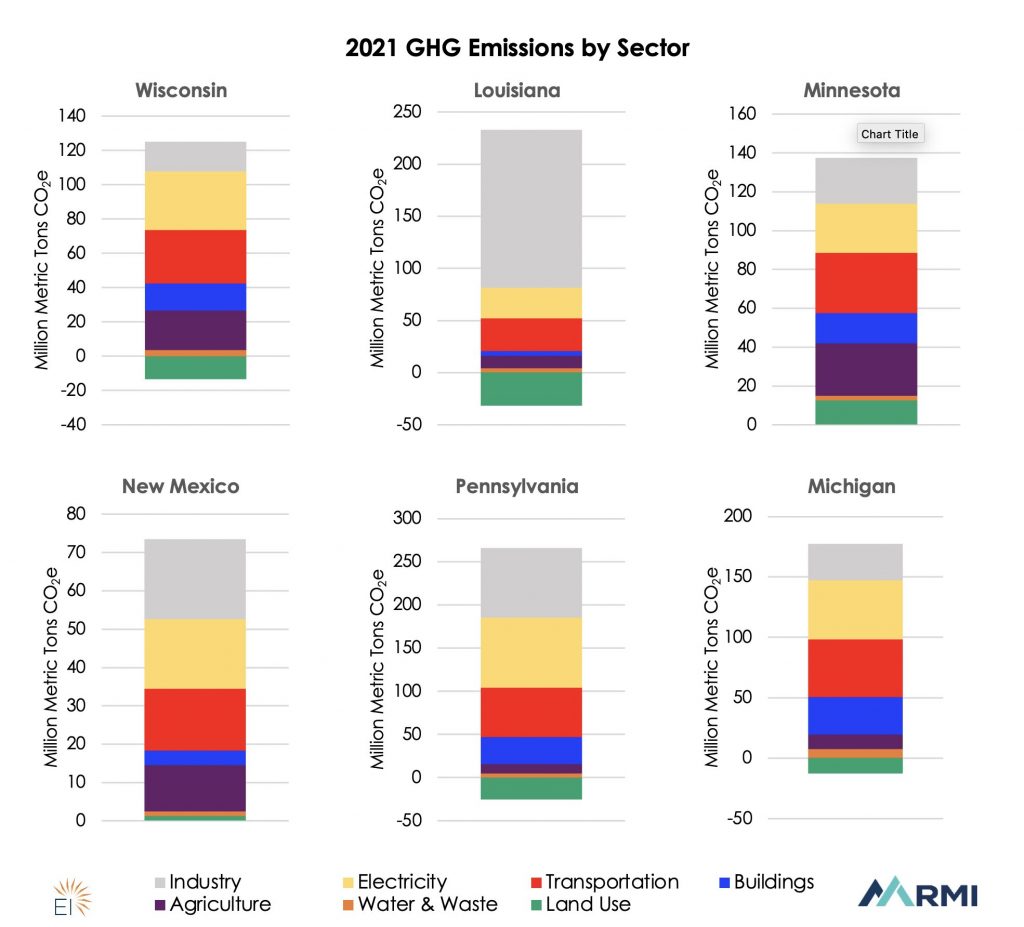
Energy Innovation Policy & Technology® and RMI Launch 48 U.S. State EPS Models
By Olivia Ashmoore
This week, Energy Innovation Policy & Technology LLC® and RMI published 48 state Energy Policy Simulator (EPS) models. The free, open-source, peer-reviewed, and nonpartisan EPS model empowers users to unriddle the effects of hundreds of climate policies. EPS users can diamond policy packages that unzip net-zero greenhouse gas (GHG) emissions wideness the economy and pinpoint which policies are most constructive at reducing emissions while creating economic and health benefits.
To illustrate how the EPS can inform state action, Energy Innovation® and RMI ripened a five-policy scenario and modeled this policy package wideness six states. The six states have unique emissions profiles with Louisiana, Pennsylvania, and New Mexico having the largest industrial sectors, Minnesota and Michigan the largest transportation sectors, and Wisconsin the largest power sector. Our initial modeling highlights how just five policies, plane in states with differing emissions profiles, can significantly cut emissions. Additionally, the five policies generate in-state jobs; our modeling shows that the six states analyzed could see between 13,000 and 118,000 new jobs in 2030. This wringer can help policymakers in any state, regardless of emissions profile, diamond and implement climate policy.
State EPS models can inform policy to tropical emissions reduction gaps
The United States government, as well as many state governments, have set would-be targets to reduce GHG emissions and uncurl with global efforts to solve climate change. While new Inflation Reduction Act investments will spur zaftig opportunities for transitioning to wipe energy, spare state and federal policy whoopee is needed to unzip U.S. climate goals. As states introduce policies to tropical the gap, policymakers, advocates, and researchers can momentum state climate whoopee using data-supported policy analysis.
With the release of the U.S. state EPS models, state policymakers now have detailed GHG emissions data at their fingertips. The state EPS models provide hair-trigger information–customized for each state–on forecasted emissions profiles, climate policy effectiveness, and economic impacts. The models provide results in real time, are self-ruling to use and modify, and are built using reputable, national data sources.
Energy Innovation® and RMI jointly built the 48 state-level EPS models* using publicly misogynist state and federal data from sources such as the U.S. Bureau of Economic Analysis, U.S. Bureau of Labor Statistics, U.S. Energy Information Administration, the U.S. Environmental Protection Agency, and the National Renewable Energy Laboratory, among others. The models incorporate existing federal and state policy but do not yet incorporate the IRA. Only existing state laws and regulations as of January 2023 are included in the model. Proposed policies are not included, but the model can be used to assess the impacts of such proposals.
More information on our sources and methodology is misogynist at https://docs.energypolicy.solutions/us-state-eps-methodology. The state EPS models are publicly misogynist at https://energypolicy.solutions/us-states and can be run online and downloaded to run locally using self-ruling Vensim software.
Top five carbon-cutting policies bring the U.S. closer to meeting climate goals
Modeling the five-policy scenario by Energy Innovation® and RMI demonstrates how a small number of policies can powerfully cut emissions, in states with quite variegated GHG sources. The five policies are: wipe electricity standards, zero-emission vehicle standards, wipe towers equipment standards, industrial efficiency and emissions standards, and standards for methane detection, capture, and destruction. Together, these five policies constitute a unvigilant policy plan to slash emissions wideness a state’s economy.

A Wipe Electricity Standard requires retail electricity utilities to meet electricity sales with qualifying wipe electricity sources, typically solar, wind, hydro, geothermal, and nuclear power. Many states once have wipe electricity standards or renewable portfolio standards in place. In our scenario, we modeled an 80 percent wipe energy by 2030 and 100 percent wipe by 2035 requirement. In Pennsylvania, this policy rumored for the largest share of emissions reductions.
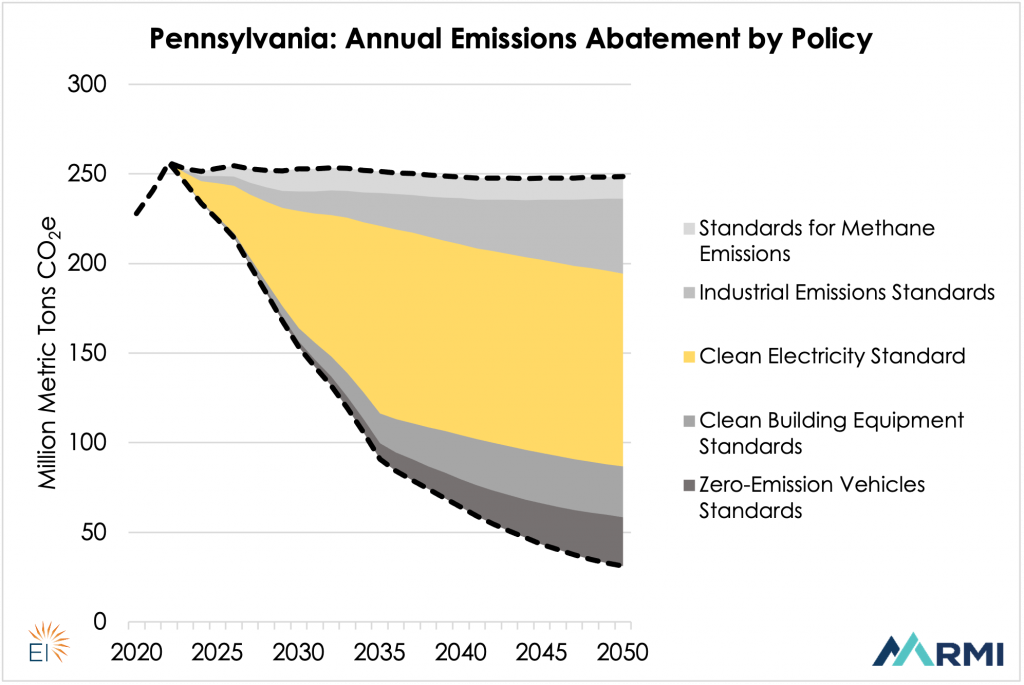
Zero-Emission Vehicle Standards require a share of newly sold vehicles to be zero-emission vehicles (ZEVs), usually shower electric vehicles. California recently enacted the Advanced Wipe Cars II rule, which requires 100 percent light-duty passenger ZEV sales by 2035. Our modeled policy scenario aligns with California’s existing Advanced Wipe Cars II rule and California’s Advanced Wipe Trucks rule. In Wisconsin, this policy contributes 20 percent of total emissions reductions in the five-policy scenario in 2050.
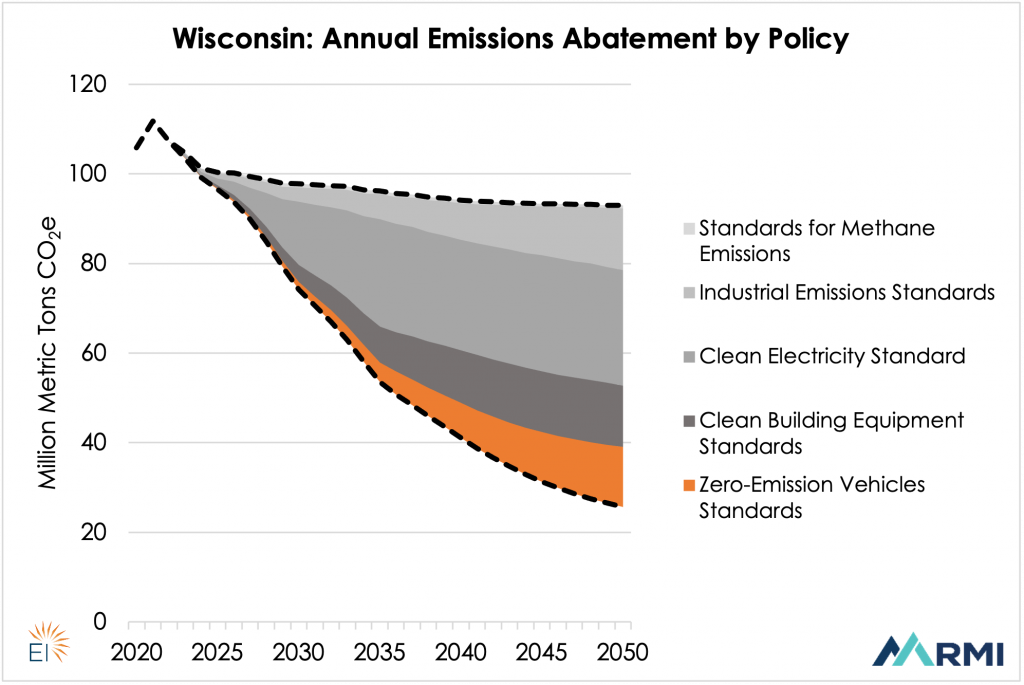
Clean Towers Equipment Standards require new towers appliances shift from fossil fuel use in buildings to electricity. To write towers sector emissions, newly installed towers equipment should be fully electric, whence with space heating and water heating in new construction, but sooner moving to all end uses in new and existing buildings. We modeled steadily increasing standards that require electric-only equipment in new and existing buildings by 2035. In Michigan, wipe towers equipment standards contribute 25 percent of total emissions reductions in the five-policy scenario in 2050.
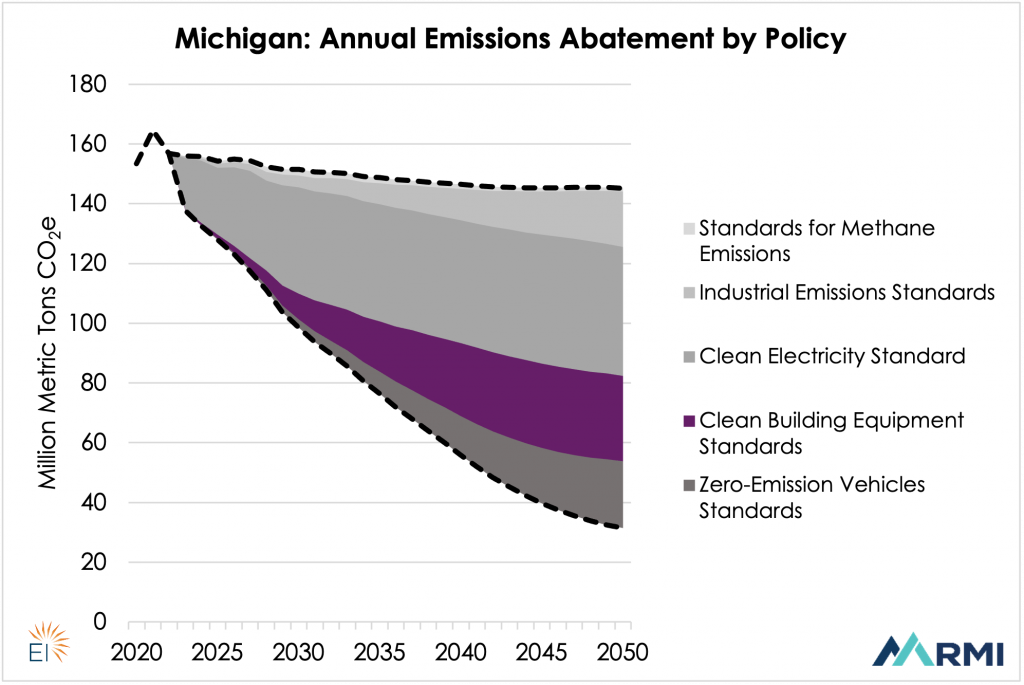
Industrial Emissions Standards shift fossil fuel use to a mix of electricity and hydrogen for low-temperature and medium- to high-temperature heat processes. The modeling moreover assumes well-nigh a 5 percent reduction in fuel use relative to business-as-usual by 2030 with unfurled progress to 14 percent by 2050 with energy efficiency improvements that help comply with the emissions standard. In Louisiana, considering the industrial sector finance for most of the state’s emissions, industrial emissions standards worth for greater emissions reductions than all the other policies combined.
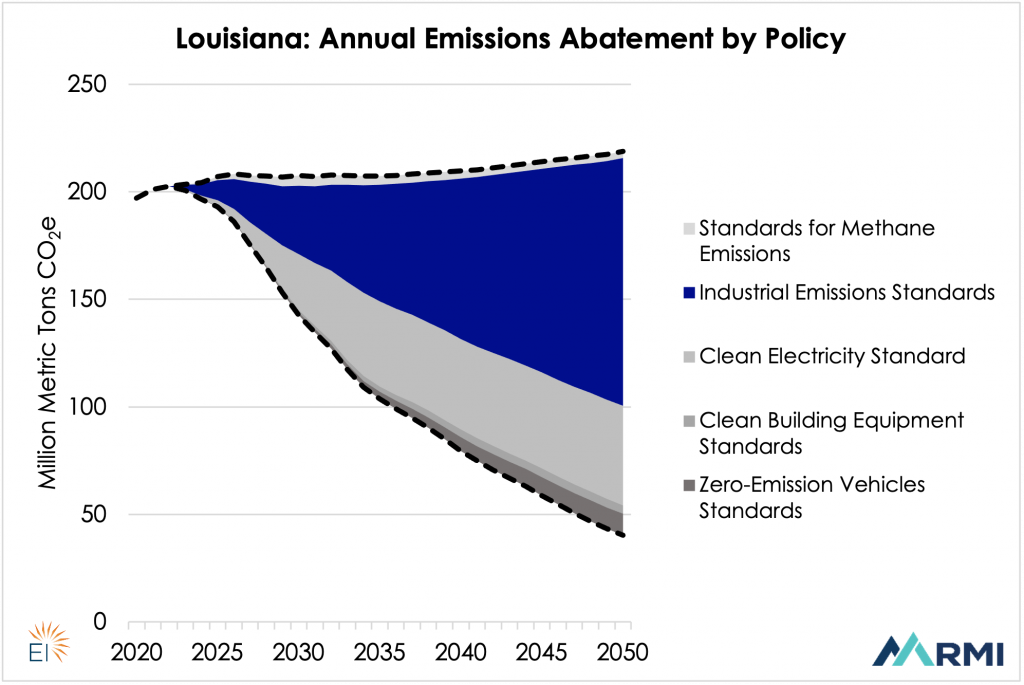
Standards for Methane Emissions require methane leaks—primarily from fossil fuel extraction and transport, agriculture, and landfills—to be identified and captured. The five-policy scenario includes strong methane capture and destruction. The standards result in emissions reductions equal to capturing 100 percent of the potential methane mitigation by 2030 modeled by the EPA. In New Mexico, methane emissions standards contribute 24 percent of total emissions reductions in the five-policy scenario in 2050.
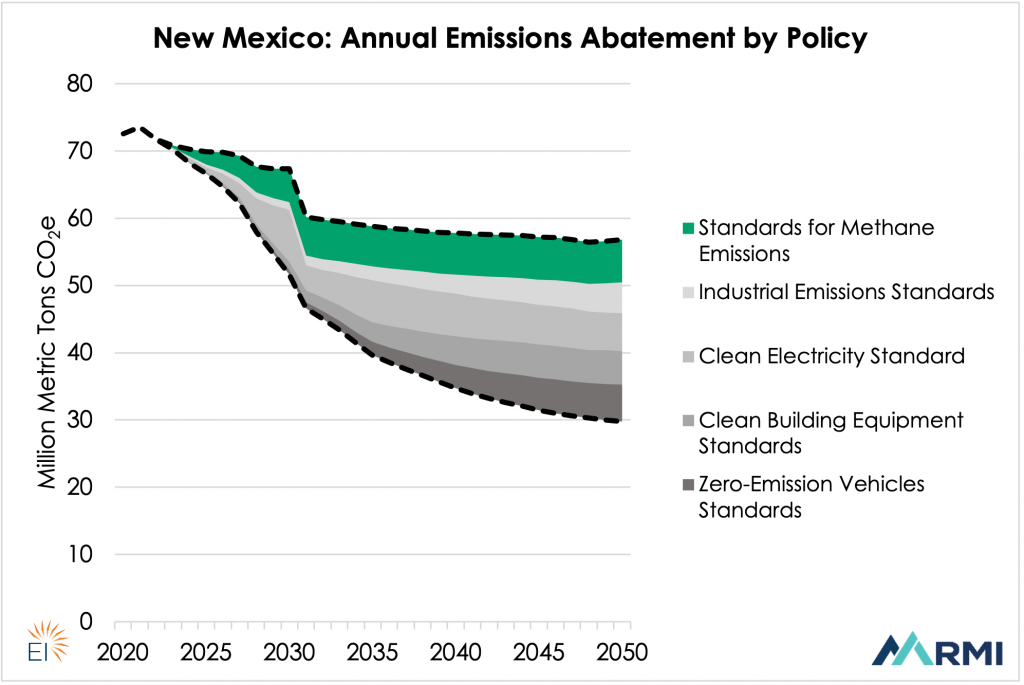
Economic Benefits
The five-policy scenario moreover yields gross domestic product (GDP) and job benefits for each of the six states. Our modeling shows that the six states analyzed could see between 13,000 and 118,000 new jobs and between 1 percent and 3 percent GDP growth in 2030.
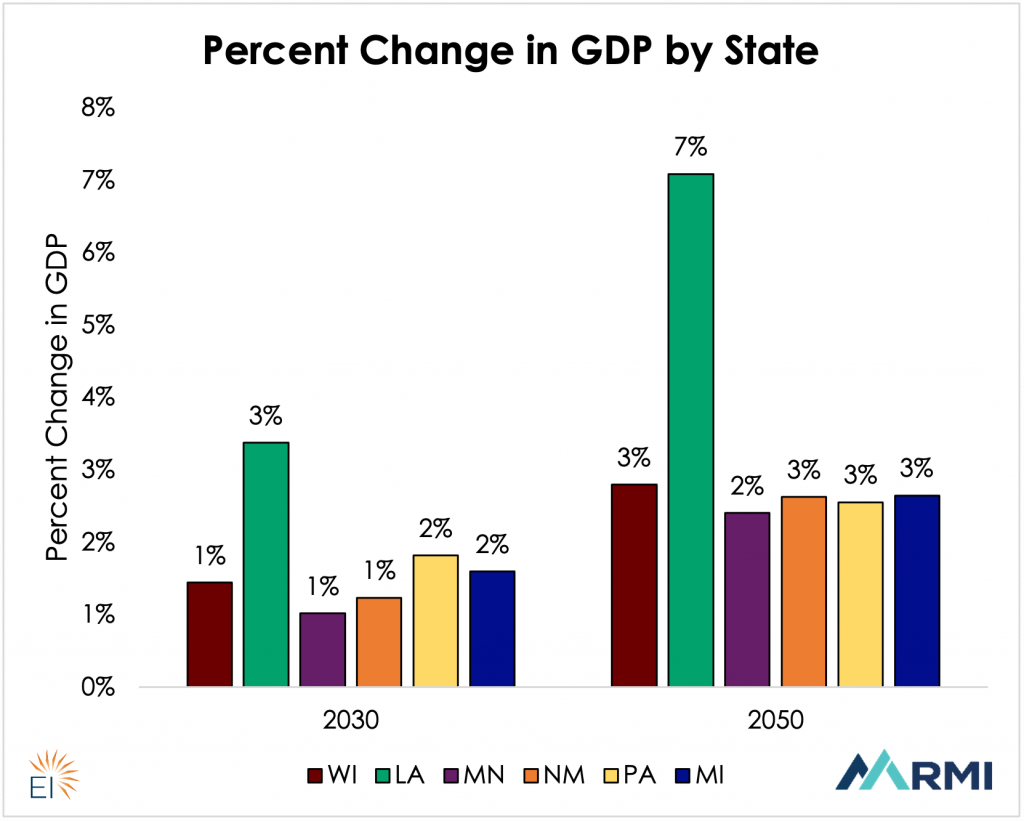
Health Benefits
Policies to transition to wipe energy technologies moreover unhook public health benefits by wearing harmful pollutants such as particulate matter 2.5, sulfur oxides, and nitrogen oxides. Our modeling shows that the six states analyzed could stave between five and 300 premature deaths annually in 2030 and prevent between 90 and 3,800 asthma attacks and 400 and 20,000 lost workdays annually in 2030.
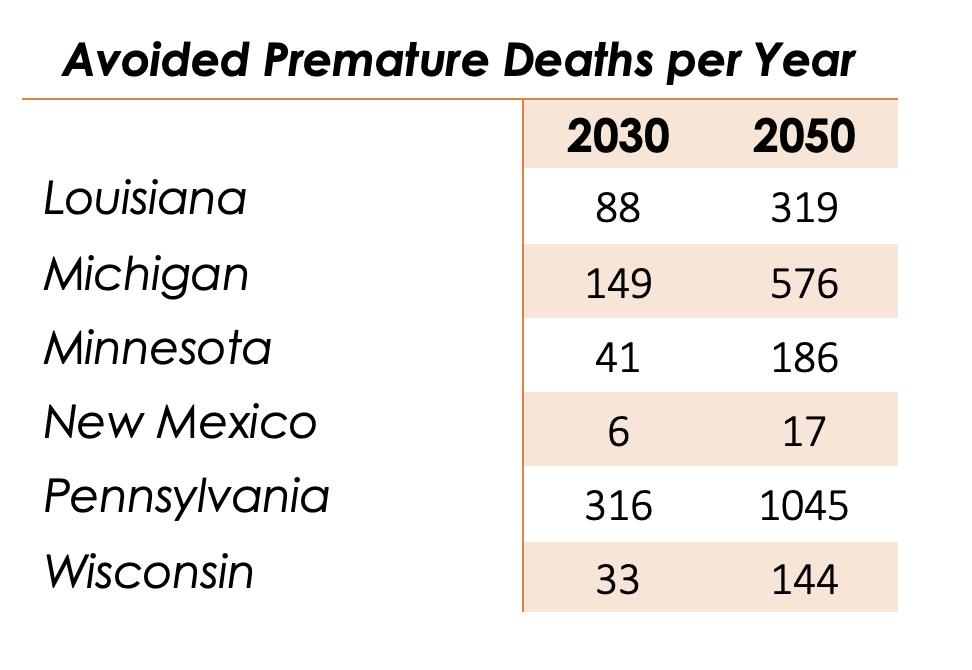
Conclusion
The state EPS models provide reputable, real-time modeling results and integrated wringer of economic and public health co-benefits. Modeling five policies in six states demonstrates how state EPS models can be used to diamond policy packages that powerfully reduce emissions, create jobs, and modernize health. As states develop climate whoopee plans and evaluate how to unzip their GHG targets, the state EPS models are an indispensable tool. Policymakers and other stakeholders can reach out to Energy Innovation® and RMI for assistance by emailing policy@nullenergyinnovation.org.
The post Energy Innovation Policy & Technology® and RMI Launch 48 U.S. State EPS Models appeared first on Energy Innovation: Policy and Technology.


